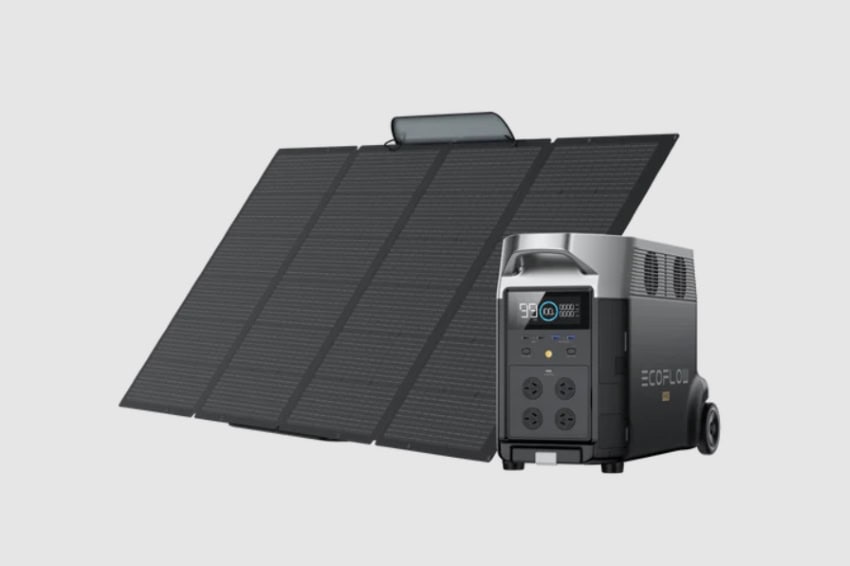Electricity bills can be a hefty expense for many households in Australia. Knowing how to calculate electricity bill and understanding the primary factors that influence it can help you manage your energy costs more effectively. In this article, we’ll guide you through the process of calculating your electricity bill, discuss the key variables that affect it, and provide practical tips on how to reduce your electricity costs. Let’s begin!
How to Calculate Electricity Bill in Australia?
Here are a few ways on how electricity bill is calculated in Australia:
Method 1: Estimate Based on Appliance Wattage
To calculate electricity bill in Australia based on appliance wattage, follow these steps:
1. List all major appliances in your home, including HVAC systems, water heaters, laundry machines, refrigerators, TVs, dishwashers, lighting, and electric ovens.
2. Determine the specific wattage of each appliance by checking the manual or the appliance itself.
3. If wattage is not listed, use the formula: Watts = Amps × Volts
4. Estimate the usage hours for each appliance per month.
5. Calculate the kilowatt-hours (kWh) consumed by each appliance using the formula: kWh = (Watts × Usage Hours) ÷ 1000
6. Find the electricity rate in your state or region.
7. Calculate the cost for each appliance using the formula: Cost = kWh × Electricity Rate
8. Sum up the costs of all appliances to estimate your monthly electricity bill.
Method 2: Use a Smart Meter or Energy Monitor
Installing a smart meter or energy monitor can provide accurate, real-time data on your electricity usage. These devices can:
⦁ Track energy consumption for individual appliances or your entire home.
⦁ Send usage data to your smartphone or computer.
⦁ Help identify high-consumption appliances and peak usage times.
⦁ Provide insights for reducing energy consumption and costs.
Keep in mind that smart meters and energy monitors can be relatively expensive, but they offer a convenient and very precise way to monitor your electricity usage.
Method 3: Utilize the Electricity Bill Calculator
An online electricity bill calculator offers a quick and easy way to estimate your monthly costs. There are two types of calculators:
⦁ General Calculators: This kWh cost calculator in Australia uses national averages and requires minimal input, such as the number and type of appliances you own. While less accurate, they provide a rough estimate of your electricity bill.
⦁ Appliance-Specific Calculators: These allow you to input detailed information about your appliances, such as size and usage frequency, resulting in a more accurate estimate. To calculate electricity usage, add up the estimated costs for each appliance to determine your total monthly bill.
What Factors Affect Your Electricity Bill?
Have you noticed your electricity bill creeping up and wondered why? You’re not alone! Energy costs can fluctuate for many reasons, from how much power you’re using to changes in electricity rates. Here are some common reasons why your electricity bill may have increased:
1. Energy Usage: Your energy consumption in kilowatt hours (kWh) directly influences your bill. Using air conditioners in summer or heaters and lights more frequently in winter can lead to higher usage. Acquiring new appliances may also contribute to increased consumption.
2. Electricity Cost: The wholesale price of electricity fluctuates daily based on demand. Energy providers purchase electricity and sell it to customers at a fixed price, typically adjusting rates once a year. Changes in the cost per kWh can affect your bill.
3. Billing Period: The number of days in your billing cycle can vary. Ensure you compare bills with the same number of days to accurately assess changes in your energy costs.
4. Estimated Billing: If your energy provider couldn’t access your property to read the meter, they may have estimated your usage. Contact your provider if you’re dissatisfied with an estimated bill.
How Can You Reduce Your Electricity Costs?
Now, let’s discover some practical ways to reduce your electricity costs:
1. Identify High-Consumption Appliances: Use the calculation methods mentioned above to pinpoint which appliances consume the most electricity. Focus on reducing the usage of these devices or replacing them with more energy-efficient models.
2. Implement Energy-Efficient Home Improvements: Invest in home improvements that enhance energy efficiency, such as installing insulation, sealing air leaks, upgrading to LED lighting, or replacing old appliances with certified Energy Star models. These upgrades may require a little bit more initial investment but can lead to big long-term savings.
3. Adopt Energy-Saving Habits: Simple changes in your daily routines can add up to substantial savings. Turn off lights and electronics when not in use, use natural light and ventilation when possible, set your thermostat to energy-saving temperatures, and run appliances like dishwashers and washing machines only with full loads.
4. Opt for Community Solar: For those who cannot install rooftop solar panels, community solar programs offer an alternative. By subscribing to a nearby solar farm, you support clean energy generation in your area and receive solar credits on your utility bill, reducing your monthly electricity expenses.
5. Install Solar Panels: If you have a suitable budget and roof, installing PV solar panels can highly reduce or even eliminate your electricity costs. Solar energy systems will let you generate your own clean electricity, potentially offsetting your entire energy consumption.
6. Use Solar Generator: Looking to get the most out of your solar panel setup? Adding a solar generator can help you store and use solar energy more efficiently, cutting down on electricity costs. A great option is the EcoFlow DELTA Pro Solar Generator (PV400W). With an expandable capacity from 3.6kWh to 25kWh and an AC output of up to 7200W, it can handle 99% of household appliances with ease, perfect for all your energy needs.

Conclusion
There you have it! Fully comprehending how to calculate your electricity bill and its influencing factors will let you take control of your energy costs. Implementing simple energy-saving measures and being mindful of your consumption habits can significantly lead to savings on your electricity bills. Investing in solar panels to generate renewable energy and pairing them with a solar generator for efficient storage can further reduce reliance on the grid, maximizing your long-term savings. Remember, small changes can make a huge difference in the long run, helping you save money and contribute to a more sustainable future.
FAQ
Here are some commonly asked questions on how to calculate electricity bill.
How to read electricity bills in Australia?
To read your electricity bill in Australia, look for the figure showing your energy use in kilowatt hours (kWh). Your bill is calculated by multiplying this kWh figure by the energy price per kWh. Check the billing period to see how many days you are being billed for, and be aware that estimated bills may be issued if your meter can’t be accessed.
How much is the electricity bill per month in Australia?
The average monthly electricity bill in Australia varies by state and household size. On average, households pay $100 to $200 per month, with higher costs in regions like South Australia and lower in Victoria. Factors like energy usage, provider rates, and solar panel adoption influence costs. Using solar panels and solar generators can help reduce electricity expenses.
How to calculate electricity bill from meter reading?
To calculate your electricity bill from a meter reading, you need to know your energy use in kilowatt hours (kWh) and the energy price per kWh. The formula is: Bill ($) = energy use (kWh) x energy price ($/kWh). You can find your energy use by checking your meter readings and calculating the difference between the current and previous readings.


